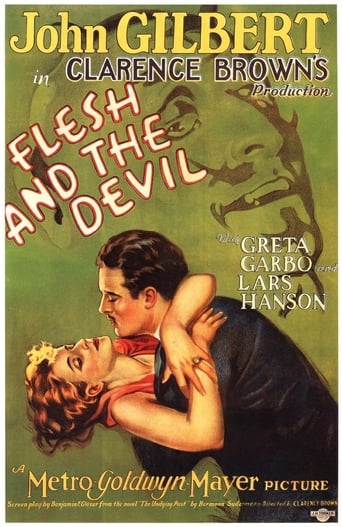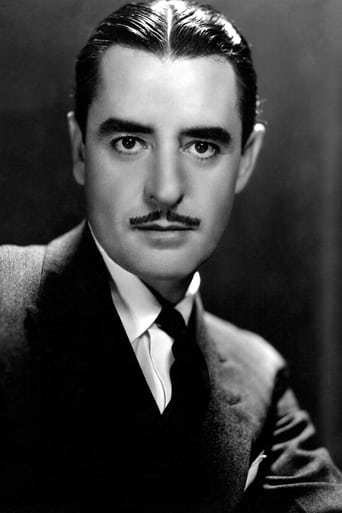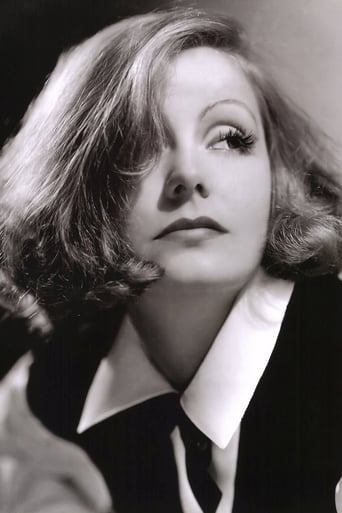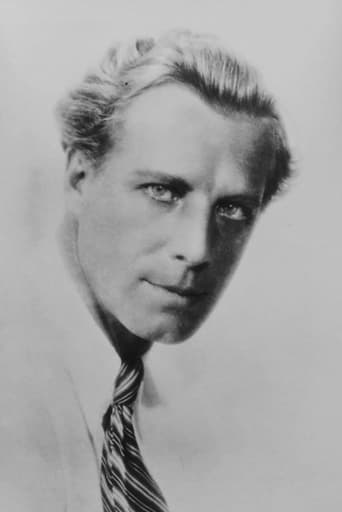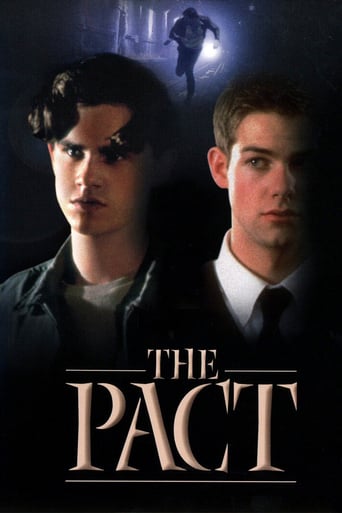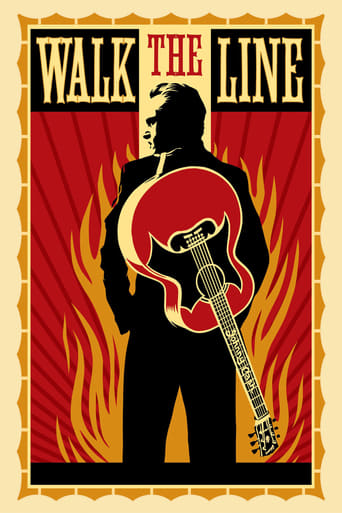Flesh and the Devil (1926)
When lifelong best friends Leo and Ulrich return home after completing their military training, Leo meets the stunning Felicitas at a railway station and is mesmerized by her beauty. A scandal follows, for which Leo is sent away. Returning home three years later, he discovers that much has changed.
Watch Trailer
Cast


Similar titles
Reviews
Powerful
Excellent, Without a doubt!!
best movie i've ever seen.
A Major Disappointment
NOTES: Despite his rave review in The New York Times, in which he commented upon Brown's "admirable artistry" and the film's "distinguished cast" ("Miss Garbo is undeniably alluring"), Mordaunt Hall did not find a place for the movie in either his "Top Ten" or his supplementary list. His fellow critics, however, were not so neglectful. In the annual Film Daily poll of 280 movie reviewers, Flesh and the Devil came in at 10th position. The movie also scored big at the boxoffice. COMMENT: A fascinating and completely engrossing film noir, one of the top pictures in the genre, Flesh and the Devil rivets the viewer's attention from the very opening shot and never lets it go until the end title. Encouraged by Brown's inventive direction, ace cameraman William Daniels has a field day with noirish lighting and atmospheric effects. Great emphasis is placed upon darkness with some scenes so brilliantly lit, it's just possible to make out the players. Not that they have anything to complain about. Garbo not only looks great (Daniels, in fact, was her favorite cameraman) but gives a vibrant, smouldering performance that almost literally sets the screen on fire. More than one critic has even gone so far as to say that Garbo and Daniels walk away with the movie. That's not strictly true because Brown's sensitive direction also deserves a bouquet, and Gilbert's portrayal of the tortured hero is nothing short of compelling. He is more than adequately supported by Lars Hanson (a little inclined to over-act) and given solid competition by the ever-reliable Eugenie Besserer and particularly by Barbara Kent (her second of thirty-five movies) who most convincingly matures from sixteen to nineteen in the course of the story. George Fawcett also deserves a nod for his rounded portrait of the pastor who is not averse to brandy and cigars. As might be expected from Metro-Goldwyn-Mayer, production values are nothing short of lavish. But not escapist lavish. Most realistically lavish. Sets and costumes are breathtaking, but always appropriately in character. A final compliment to Marian Ainslee whose dialogue titles are not only literate and pithy, but seem so completely natural they neither interrupt the flow of the story nor divert the viewer's attention from the tragedy that so engrossingly unfolds on the screen.
Directed by five time Best Director Oscar nominee Clarence Brown, this essential silent drama, co-written by Benjamin Glazer, features Greta Garbo in her third American film, following Torrent (1926) and The Temptress (1926), all of which were released in the same year. It's also the first of her four pairings with actor John Gilbert, their last was Queen Christina (1933), and first of seven with director Brown. In this film, Garbo serves as the woman in a love triangle with soldier Gilbert and wealthy Lars Hanson. Gilbert's and Hanson's characters had grown up childhood pals who'd made a "blood" pact on "Friendship" island. This film was added to the National Film Registry in 2006.Upon returning from military service, Leo (Gilbert) meets and falls in love with Felicitas (Garbo), unaware that she's a married woman. When her husband the Count (Marc McDermott) returns to find them together in an uncompromising position, he challenges Leo to a duel. Leo kills the Count and is persuaded by Pastor Voss (George Fawcett), aware of the affair, to go away for 5 years. Before he leaves, Leo asks his childhood "blood brother", now rich Ulrich von Eltz (Hanson) to look after the widow, telling him the dispute with the Count was over a card game.While returning from his self imposed exile, Leo dreams of nothing but Felicitas. He returns to his mother (Eugenie Besserer) and finds that Ulrich's sister Hertha (Barbara Kent) now lives with her, since her older brother's wedding. Hertha has always had a crush on Leo. When Leo finds that Ulrich's wife is Felicitas, he is crestfallen to the point of jeopardizing their long friendship. Felicitas intervenes to tell Leo that Ulrich is lost without his childhood friend, and Leo reconciles with his friend without revealing his past with Felicitas. Even though Pastor Voss preaches against it, when Ulrich is absent on business, Felicitas seduces Leo once again. Pastor Voss councils Leo about the Devil, who uses the Flesh to try and tempt men who are otherwise of great character.When Ulrich returns, he catches Leo in Felicitas bedroom. She had been willing to run away with Leo, but when he refused, she was satisfied with just continuing their affair. So, Leo was strangling her when Ulrich walked in. She accuses Leo of disloyalty and a resigned Leo admits it's the truth. Ulrich challenges Leo to a duel the next morning on Friendship island, the place of their childhood "blood" pact. While their duel has begun, Felicitas rushes to stop it when she falls through the frozen ice surrounding the island and drowns. Unaware of this, but aware that his friend Leo is about to willingly take his bullet, Ulrich realizes the truth ... that Leo had shot the Count because he was in love with Felicitas. The two men renew their friendship and leave the island arm in arm.
"Flesh and the Devil" presents a world imagined by men. The title stakes out that world. Need anyone ask whose flesh. The male leads may be damn glamorous but no not theirs and certainly not that of that hard baked parson, Mr. Christian himself. No, flesh when affixed to evil, means female and female means sex. Felicitas is a temptress in league with the devil, and the tempted, more fortunate, are in league with the ruling gender.The homoerotic "relationship" is not an act of befriending. What it is is male affiliation at the expense of, and through the exclusion of, women. It may or may not be sexual in nature, but it is binding. Unlike befriending it does not expand male identity but narrows it, making it more, not less, reliant on force.In "Flesh and the Devil" we see its naked action. Male passion is based in ownership both in its means and as an end. It is "love" based in fantasy. It assigns to its object, in this case Felicitas, erotic fascination. The husbands and lover eroticize her. Which makes her own passion little more than an act of accommodation to a male world. Her reality then is not much more than being a inflamer of sinful passion. Mainly she submits to this identity, but when she acts on her own behalf, she's viewed as carnal, both in the mind of the parson, and ultimately of the husbands/lover, a grouping which constitutes her social masters.Leo and Ulrich assert masculine superiority, not friendship, via their blood bonds. Their actions toward Felicitas are their chief means of certifying both their bond and their male identity. The impress they make on Felicitas is secondary to that which they make on each other. And their exceptionalism of class, as impressive as it is, is no match for their exceptionalism of gender. They are upright and masculine, sanctioned to act from their birthright. This is the source of their immemorial attraction to each other.If Felicitas is deadly and then dead, they are hallowed. If her version of passion is of the body and sinful, theirs is superior and sanctified. If her abject self-repudiation cannot save her life, they can glibly embrace in mystical union.In other words, Felicitas is the ground of their unity. She must be sacrificed to resolve the tension and incipient violence between her two "lovers." She will lose no more husbands in duals, even if she alone must absorb the cost of male cruelty and vengeance. For this is a male world with a male outcome. Mythic masculinity is achieved while she is drowning in ice.
"Garbo multiplied the cinema's power of suggestion to infinity, and the gaze so deep that every spectator there found what he soughtshe spoke a different language to every man" Ado Kyrou, 1957FLESH AND THE DEVIL (1926), the first film that the director Clarence Brown made with "an immigrant actress" who Greta Garbo had been before its premiere occurred to be one of the very best films for its time. People flocked to see it, Garbo became so eminent that she could almost dictate the terms in film industry, her relationship with John Gilbert turned out to be no baseless gossip. However, since then, 80 years have passed, not many people know how important the premiere of the film was, how historic it turned out to be in Garbo's career. Yet, it seems never to be fading since there are STILL many people who watch this film in its recent DVD release. Let us look at some aspects that make it a real classic, not only for its time, but for the general history of cinema.THE CINEMATOGRAPHY by William H. Daniels is magnificent. Probably, anyone who has seen the film will never forget its most famous lighting effect when Gilbert lightens Garbo's cigarette in the shadowy garden. Another stunning moment is the scene of Leo Von Harden and Count Von Rhaden's duel. It is played in silhouette against the vast sky and, as a result, we can see not so much people but rather their shadows. An excellent moment that remains in memory is the waltz of Felicitas and Leo on the ball at Stoltenhof. The scene is filmed so memorably that it is hard to be skipped. Yet, the image of the "Isle of Friendship" where two best friends swore eternal loyalty as children and then went to fight in a duel is presented in an unforgettable way. Such pictures never fade in memory.THE CAST are very talented, real elite of the time. GRETA GARBO and JOHN GILBERT: Gilbert, who was Hollywood's leading man after the death of Rudolph Valentino, does a great job here as Leo Von Harden. His love to Felicitas (and to Garbo in real life) is so natural that everybody will get an impression that it is real what they can find on the screen. The love scenes between the two are particularly natural, hardly to be found elsewhere in films! If there is chemistry between the stars in a film, it is, without any doubt, in FLESH AND THE DEVIL. Greta Garbo performs so well that no wonder people saw her (many for the first time) and very soon started to admire her as an actress. She is excellent in the role and her acting still does not appear to be dated whatsoever! The whole of Garbo's sequence is marvelous but if I were to choose which scenes are particularly memorable, I would pay attention to two brilliant moments: first, the one at the train station when Leo and Felicitas meet for the first time and Leo picks the flowers that fell onto the ground and gives them to her, and, second, the moment when Leo and Ulrich, two lifelong friends, go to fight in a duel. Viewer's attention is directed towards Hertha, Ulrich's virtuous sister. She does her best to persuade Felicitas to take steps to stop this madness that a duel between two best friends appeared to be. How beautifully Garbo shows a change of heart... I admit that I have never seen such a performance before! Therefore, the words by Kyrou about Garbo, entailed at the beginning of my review, appear to accurately fit here. OTHER CAST: Besides Garbo and Gilbert, there is a great Swedish actor, Lars Hanson, with whom Garbo played in one film before FLESH AND THE DEVIL (this was Mauritz Stiller's THE SAGA OF GOSTA BERLING). He is memorable as Ulrich, particularly in the final sequence when friendship occurs to be, indeed, sacred. The fabulous acting of the three (Garbo, Gilbert and Hanson) is expressed in a brilliant scene of the three meeting after Leo's return from Africa and drinking a toast. Other cast give very good performances, too, including Barbara Kent as Hertha and Marc Mc Dermott as Count Von Rhaden.OTHER MEMORABLE MOMENTS include a number of humorous scenes that are, in no way, dated. It is important to state that many silent films may seem "silly" because today's viewers laugh at the scenes that were not supposed to be funny. It is caused by the challenge in people's sense of humor. However, it does not appear to be in FLESH AND THE DEVIL. Humor is retained and still serves its purpose. Consider the pastor seeing twins and believing to be drunk (he sees one girl in double). Or the final shot ... "You won't bid me goodbye?"FLESH AND THE DEVIL is a film that I would recommend to anyone to see. It is a real classic and, in this regard, it may be considered similar to other classics of the time, like SUNRISE (1927), BEN HUR (1925) and THE LAST LAUGH (1924). But there are three more aspects about it that make the movie a must see - William H. Daniels' cinematography, Clarence Brown's direction and Greta Garbo's magnificent silent performance together with her alluring beauty. See it so that the film can last forever in your most beautiful memories. 9/10!

